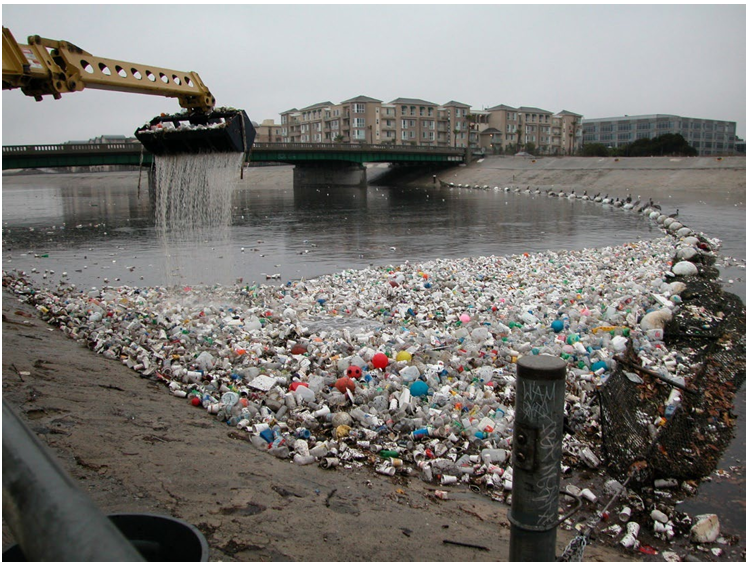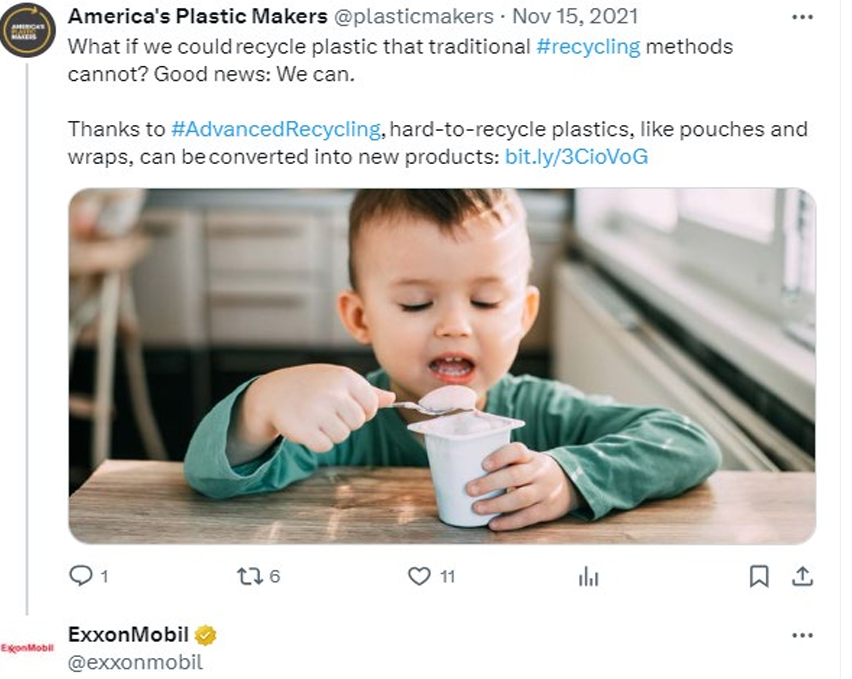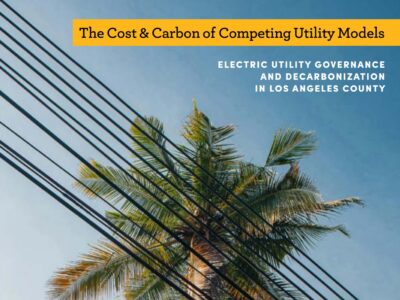Why You Should Read CA’s ExxonMobil Plastic Lawsuit
California’s lawsuit against ExxonMobil for lying about plastic recycling is the latest example of the state using old-fashioned legal tools to address more modern harms.

The media have moved on (understandably) from California’s recent lawsuit against Exxon over plastic recycling to other environmental stories like Hurricane Helene’s catastrophic damage and Hurricane Milton’s terrifying, rapid intensification. But anyone interested in the problem of plastic pollution—which should, frankly, be everyone—will appreciate digging deeper than the Day One headlines to read California’s 147-page complaint.
The complaint is a cri de coeur: clear, outraged, and horrifying in its recounting of the plastic waste problem and its causes. The document should be required reading for everyone from corporate marketers to policymakers to law students learning how to build a compelling narrative from complex facts.
Some excerpts from the complaint will make your blood boil, including the following information and allegations:
- In response to growing public unease about plastic pollution, “a small number of petrochemical companies including Exxon and Mobil began a decades-long campaign that began in the 1980s to convince the public that mechanical recycling would solve the plastic waste and pollution crisis. This campaign, which is ongoing today, succeeded in convincing the public that plastics were recyclable. This gave ExxonMobil cover for decades to continue producing more and more plastic unchecked.”
- In recent years, ExxonMobil has deceptively touted its “advanced recycling technology” as a proprietary “breakthrough in recycling technology,” says the complaint. “But this purported breakthrough technology has been available to ExxonMobil to employ in their production operations for decades. In fact, Mobil patented the co-processing of plastic waste in cokers in 1978. And both Exxon and Mobil conducted co-processing pilots in the 1990s, neither of which continued beyond the trial phase as public attention on plastic waste dwindled at that time… Nevertheless, almost half a century after Mobil originally patented the coprocessing of plastic waste, ExxonMobil attempts to rebrand this technology as the ‘new’ and ‘advanced’ solution in order to appease renewed public concern over plastic waste and pollution.”
- “In California, from 1990 to 2022, an astounding 2.7 to 3.3 million tonnes of plastic waste escaped into California’s environment. In 2022 alone, estimates of the amount of plastic waste leaked to land and into the ocean in California ranged from 121,324 to 179,656 tonnes—the equivalent of dumping 20 to 30 garbage trucks of plastic waste per day into California’s landscapes and waterways.”
- “Humans are exposed to microplastics predominantly through inhalation of tiny plastic particles suspended in indoor and outdoor air, and through ingestion of microplastic particles found in water, food, and other beverage sources. . . . Particles can then be absorbed through the small intestine and lungs and distributed throughout the body to other organs via the circulatory system. Microplastics have been found accumulating in the human gut, lungs, and bloodstream. Even more alarming are recent discoveries of microplastics in the human reproductive system, such as the male testis, mammary glands (breastmilk), and placental tissue.”
It has been clear for a while now that plastic pollution is utterly out of control. As I wrote in 2018:
[W]e are drowning in plastics. Bits of plastic have been found in beer, in major brands of bottled water, in 75% of deep sea fish, in the soils of the Swiss mountains, and at the bottom of the deepest ocean trench on Earth. We make ungodly amounts of plastic each year and then toss it, mostly without care, so that it makes its way to our rivers and oceans. Even when we try to dispose of it responsibly or biodegrade it, we largely fail. For the most part, we are stuck with the plastic we make for a very, very long time.

Things haven’t gotten better since then. California seems to be especially hard hit: The complaint cites a study finding that the San Francisco Bay, for example, has among the highest levels of microplastic contamination of any urban area in North America. The complaint estimates total costs to California from plastic waste to amount to many billions of dollars in natural resource damage, loss of recreation, public health harms, and other costs. And efforts to rein in plastic pollution in California have not yet yielded much success, despite new and meaningful legislative efforts enacted in the last couple of year (see here and here for some innovative recent bills).
So, it’s great to see California flexing its power on behalf of the public and attempting to use the courts as one more tool for fixing this mess. Courts have historically played an important role in helping to redress harms from pollution, dating back to even before the modern regulatory era. In particular, litigants have been able to use nuisance claims—which allege various interferences with the use and enjoyment of property—to rein in noxious and unreasonable pollution, like from odors, smokestacks, and polluting facilities.
This plastics complaint is one of a wave of cases over the last few decades to use public nuisance claims, sometimes together with allegations of consumer deception, to take on big corporations whose products have led to widescale harms. As such, the complaint follows a legal model set in cases brought by California public entities against purveyors of lead paint and against fossil fuel companies for deceiving consumers about the harms of fossil fuel.
Today’s global problems can seem overwhelming in their scale and complexity—especially when compared with more traditional environmental and public nuisance harms that might come, say, from a single smokestack. Climate change, plastic pollution, large-scale lead poisoning: Each of these affects people around the world in a way that can seem quite hard for policymakers to tackle. But each also involves real monetary and other harms of the sort that courts are purpose-built to help address. One job of courts is to make whole those who have been harmed by unlawful conduct of the sort alleged in this complaint. We’ll watch carefully as the ability and willingness of courts to weigh in on problems of this scale are tested.
Reader Comments
10 Replies to “Why You Should Read CA’s ExxonMobil Plastic Lawsuit”
Comments are closed.






Plastics are hideous pollutants.
Exxon and others should definitely be held accountable. All the more, perhaps, because they’ve succeeded in walking society and the economy very far out onto a limb made of it.
Suing them is a start. The larger challenge is similar to the one of with fossil fuels: what alternatives can be implemented without too much economic and social disruption? How can we reform society and the economy so that we don’t depend on plastics?
Possibly any money recovered from the FF cos could be used to fund publicly supervised R&D across several ares of endeavor–not just materials, but supply chain management, land use, industrial processes, food preservation, and other. Plastics, like fossil fuels, have become a predicate of our ability to sustain our ever-growing population at a certain level of material well-being.
We’ve made good progress on fossil fuels. We have alternatives. It’s a matter of building the political will to overcome the enormously wealthy and powerful interests that are vested in the status quo to complete the transition.
Plastics seem to be where alternative energy was 40 years ago. Is there anything on the horizon that would inform a strategy to move onto a different path?
Just need to come up with more of the micro plastic enzyme eating bugs like the oil one’s used in offshore oil spills. Seems to work pretty good! Whenever there’s a willingness to create solutions there always a way to accomplish it!
Years – if not decades ago – many food and beverage products were packaged in glass. That practice was ended. More recently, #10 business envelopes used glassine instead of plastic in the address window. That too went away. Those alternatives to plastic could be reintroduced if not mandated, but the will must be there for the latter to occur.
Nice essay. And let’s not lose sight of the fact that a significant percentage of of oil production goes to the production of plastics and other petrochemicals. According to Yale360: “Petrochemicals, the category that includes plastic, now account for 14 percent of oil use, and are expected to drive half of oil demand growth between now and 2050.”
Nice essay. And let’s not lose sight of the fact that a significant percentage of of oil production goes to making plastics and other petrochemicals. According to Yale360: “Petrochemicals, the category that includes plastic, now account for 14 percent of oil use, and are expected to drive half of oil demand growth between now and 2050.”
It is blatantly hypocritical for environmental radicals to complain about Exxon lying about plastics recycling while these same radicals have been lying about climate mitigation for many years.
No one has ever mitigated the earth’s climate not even a little bit. There is no proof, no verification, no credibility. Global climate has never been mitigated, reduced, or effected by solar energy, wind mills, electric vehicles, carbon capture, green energy etc.
Climate aficionados lack the in-depth scientific knowledge necessary to understand atmospheric physics. Instead they rely on lies, hype, politics, scare tactics, and mass delusion.
Jim, I’m assuming you include the vast majority of climate scientists in your “afficionados” category, and if “Climate aficionados lack the in-depth scientific knowledge necessary to understand atmospheric physics. Instead they rely on lies, hype, politics, scare tactics, and mass delusion” who does have the expertise! If no one, then how do you know it’s lies hype politics scare tactics and mass delusion?
Diane, admiting that no one has the knowledge and/or cpmplete set of facts and thus, the ability to make a sound conclusion regrading climate mitigation is a far cry from attesting to know the truth (despite lacking facts) and presenting it as facts. This is the definition of a lie. So, to your post, bonifide experts need not exist to identify a lie when it’s told. To Jim’s post, the facts about climate mitigation are incomplete at best. I agree this issue needs more research just whish it wasn’t so politicized. To the original topic at hand, microplastics exist everywhere (incliding in our bodies); that much is true!
Problem Solved!
If bottle beverages would go back to glass bottles, that would help cut the waste. Glasses is not without its problems but is a far better choice than plastic. Breaking a ma major company with excessive fines only makes everything worse.